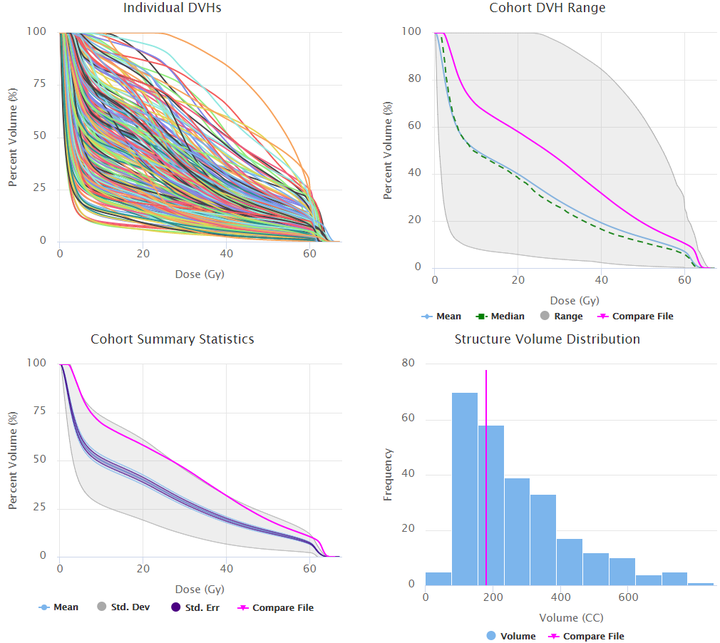Development of a DVH Registry for Plan Evaluation, Dose Accumulation, and Cohort Analysis
 Image credit: Haley Patrick
Image credit: Haley PatrickAbstract
Purpose: To develop a flexible user-friendly tool for the evaluation of organ-at-risk contours, planned dose, and accumulated dose using historical cohorts and treatment outcomes. Materials and Methods: Our DVH Registry is an interactive web-app constructed using a Django framework with a Bootstrap and Javascript front end. Patient DVHs and treatment data are transferred from the Eclipse treatment planning system (Varian Medical Systems, Palo Alto, CA) to the registry using the Eclipse API. Within the registry, patient data may be grouped into user-specified cohorts. Individual patient DVHs, along with structure volumes, structure lengths, and the mean, median and standard deviation of each cohort are plotted as interactive graphs using the Highcharts API (highcharts.com). In addition to planning-DVHs, the Registry can track structure changes and accumulated dose over the course of treatment using contours drawn on daily CBCT images. Finally, statistical and survival analysis functions are incorporated using Python statistics modules (Python Software Foundation, python.org) to allow the user to investigate relationships between treatment outcomes and dose-volume parameters. Results: Time to prepare retrospective patient cohorts for analysis is greatly reduced by the automation provided by the DVH Registry. The tool’s ability to categorize DVHs by toxicity type and grade and to overlay new DVHs onto those of an existing cohort provides a facility to compare current DVHs to those previously treated, with outcomes data incorporated. We are currently using the tool to perform a retrospective analysis of rectal toxicity in prostate cancer patients, examining the level of correlation between toxicity and dose volume parameters extracted from planning and accumulated DVHs. The DVH Registry has proven useful as a QA tool for contour quality on daily CBCTs, identifying several fractions in patients where the retrospectively drawn rectum contour was not complete. Preliminary data have also shown that the volume and DVH of the rectum changes on a daily basis and can lead to differences in the planned and accumulated doses in some patients. Conclusions: We have developed and implemented a useful tool in our clinic for the visualization of DVHs and associated treatment outcomes, including accumulated dose.